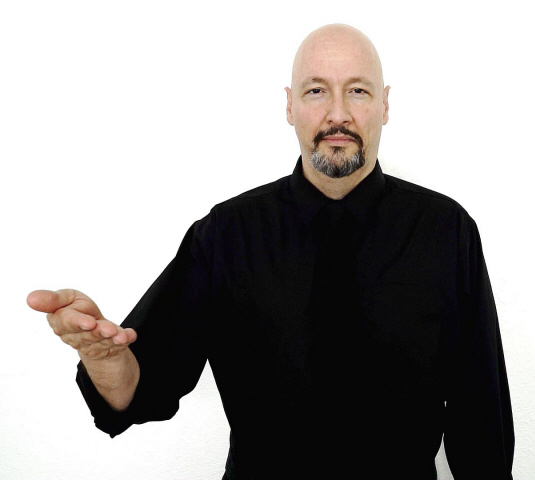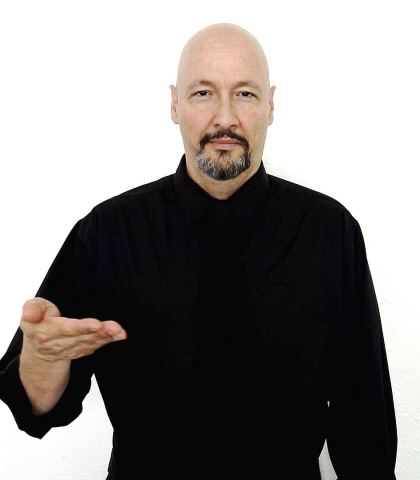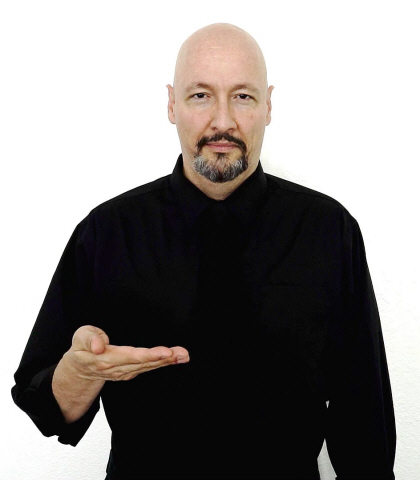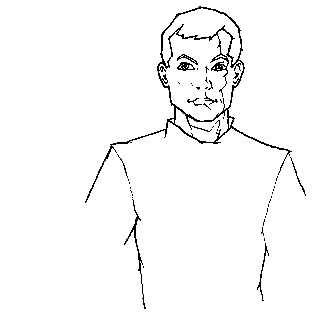American Sign Language: "WELCOME"
The sign labeled as WELCOME has several
meanings and interpretations. Remember though that the label "WELCOME"
isn't the same thing as the English word for "welcome."
For example: The sign labeled as WELCOME also means: "hire" and
"invite."
Also, this sign is in a state of "flux" (changing
opinion) in the Deaf Community.
You will meet some people who say the sign labeled WELCOME or
(WELCOME/hire/invite) is an okay response
to "thank you."
Quite a few ASL teachers (and other signers) will tell you it is NOT appropriate to use
this sign as a response to "THANK YOU."
The sign "WELCOME / hire / invite" is done by
holding the flat hand palm up out away from your body (off to the right a bit)
and then bringing the hand in toward your torso.
WELCOME / hire / invite:



My recommendation is that you use this sign to mean things like:
"Welcome, come on into my home."
"I hired him."
"I invited her.
I recommend that you do NOT use this sign as a response to
"Thank you."
So, what should you do if someone tells you "thank you?"
I recommend that you reply with one of these:
TRUE/SURE
FINE
NOTHING-TO-IT
HAPPY HELP-you
THUMB-UP
ANY TIME
NO PROBLEM
See: GUEST
Notes:
When teaching ASL there is a prescriptive approach and a descriptive
approach.
Some ASL teachers tell their students that the sign WELCOME is not an
ASL sign. Doing so is "prescriptive."
Such teachers are striving to prescribe
ASL according to their notions of how ASL should be -- as
opposed to what ASL is.
Let me share an amusing story with you:
I remember a conversation (many years ago) with an ASL instructor named ________ (name on file). Near the beginning of the conversation I had signed WELCOME in response to him thanking me for something. He "corrected" me and indicated that WELCOME wasn't an ASL sign (we are both interested in what is and isn't ASL so it wasn't as rude as you might imagine). I questioned him about it and apparently he had recently been to some workshop or seminar and a person with letters behind their name who lived more than 50 miles away (which means that person must be an expert, heh) had told everybody at the seminar that the sign WELCOME isn't an "ASL" sign.
I asked ________ (name on file) what he preferred instead and he gave me the usual, "SURE, THANK YOU, THUMBS-UP, FINE" replacements. I said "OH-I-SEE" and we went on with our conversation. (Of course I already knew and used those signs regularly as well.)
Now here's the funny part, near the end of our half-hour long conversation on my doorstep, I thanked him for coming by and he without thinking signed "WELCOME!"
I pointed out his usage of the "forbidden sign" and he did a major "gulp" and turned a pretty shade of red.
So, there you have an example of a Deaf ASL instructor who for most of
his life has signed "WELCOME" in response to "thank you" and then he attends
a workshop and has some other Deaf ASL instructor announce that "WELCOME" is
not an ASL sign. So now he becomes an evangelist and starts spreading
the message that you shouldn't sign "WELCOME" because it is not what Deaf
people "do." (Even though he is Deaf and obviously he "does" it).
After a while, enough people repeat that same message: "WELCOME" is not a
good response to 'Thank you' in ASL." At some point, after enough
people spread and accept that message it will become the new standard!
It will become the new normal. It will stop being prescriptive and it
will become descriptive due to the passage of time and adoption by the
"typical" Deaf person.
A descriptive approach to ASL instruction simply tells the students what
is currently out there being used by the Deaf Community without trying to
"preserve, memorialize, or de-English" it.
The fact is thousands and thousands of Deaf people do use the sign WELCOME. Plus,
numerous recognized experts in the field of ASL have documented the
"WELCOME" sign in various ASL dictionaries and instructional texts.
Some examples:
The text "A Basic Course in American Sign Language" by Tom Humphries, Carol Padden and Terrence J. O'Rourke lists the sign as "HIRE, INVITE and then includes the word "welcome" in lowercase.
Rod Butterworth in the Perigee Visual Dictionary of Signing:
An A to Z guide to over 1,200 signs of American Sign Language, lists
the sign as meaning WELCOME, "a common gesture of politeness and
acceptance."
Elaine Costello
in the Random House American Sign Language dictionary (1st ed.), includes
the sign--and what's more--SHE INITIALIZES IT with a "W"!
Martin Sternberg
included the WELCOME sign in "American Sign Language: A Comprehensive
Dictionary."
I could go on,
there are others, those are just the first four I grabbed off my
shelf, but you see my point.
These people are "awesome" signers and they included "WELCOME" in their ASL
texts.
The sign WELCOME is prominently listed in
dozens of major ASL dictionaries and is instantly recognized by
every adult native Deaf ASL signer I have met.
So, should YOU use the sign WELCOME in response to being told "thank you?"
My recommendation is no. The sign is "controversial" and from all
indications the "tide" is turning against the WELCOME sign being used as a response
to "thank you." Thus if you use the sign WELCOME as a response to
"thank you" it will likely have one of two results:
1. The other person doesn't care one way or another how you sign WELCOME.
2. The other person will judge you as not being familiar with how Deaf
people do ASL.
Why risk it? Instead just use WELCOME within the limits of how it is
used by adult native Deaf ASL signers and use other signs, (SURE, FINE,
THUMB-UP, ANY-TIME, NO-PROBLEM) in response to "thank you."
WELCOME / hire / invite:

Also see: HIRE
Notes:
*
Want to help support ASL University? It's easy:
DONATE (Thanks!)
* Another way to help is to buy something from Dr. Bill's "Bookstore."
* Want even more ASL resources? Visit the "ASL Training Center!" (Subscription
Extension of ASLU)
* Also check out Dr. Bill's channel:
www.youtube.com/billvicars
You can learn American Sign Language (ASL) online at American Sign Language University ™
ASL resources by Lifeprint.com © Dr. William Vicars